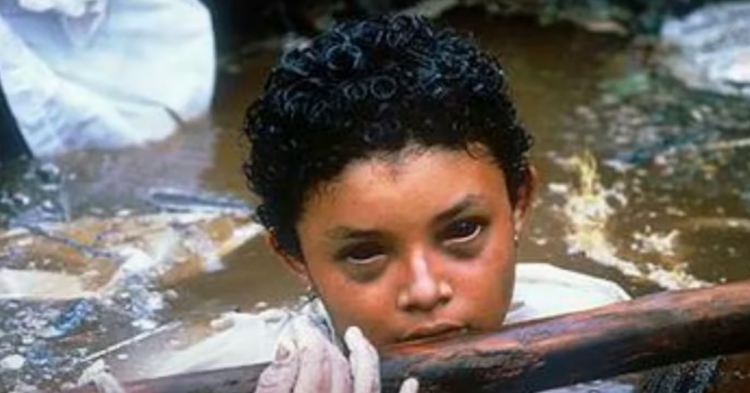It’s been 35 years since the Nevado del Ruiz volcano eruption devastated the Colombian town of Armero, yet the haunting story of one young victim continues to resonate around the globe.
Omayra Sánchez Garzón, a 13-year-old girl trapped in a mudslide, became the face of the tragedy after a photographer captured her final moments, immortalizing them. Now, three decades later, that photographer has opened up about the heart-wrenching image and its impact.
The Nevado del Ruiz volcano eruption, which happened on November 13, 1985, caused a catastrophic combination of lava, mudslides, and landslides that destroyed much of Armero.
Embed from Getty ImagesAround 25,000 people lost their lives, with many more injured. This disaster is now known as the Armero Tragedy and remains one of the deadliest volcano eruptions in history.
One of the victims was 13-year-old Omayra Sánchez Garzón.
Embed from Getty ImagesShe became trapped under the debris after the mudslides hit her home and was submerged waist-deep in sewage water with her legs pinned by a collapsed wall. Despite rescuers’ best efforts, they were unable to free her. Omayra survived for 60 hours before succumbing to her injuries.
French photographer Frank Fournier, who had traveled to the area to document the disaster, captured a powerful photo of Omayra just hours before she passed away.
Embed from Getty ImagesThe image of her staring into the camera quickly became a symbol of the tragedy and sparked a larger conversation about the lack of adequate emergency response in Colombia.
In a rare reflection about the photo, Fournier spoke about his experience during a lecture at the 2022 Xposure International Photography Festival.
Embed from Getty ImagesHe praised Omayra’s bravery, saying, “For three nights and three days — stuck in a pool of sewage water at the bottom of a small hill, lay crushed under layers upon layers of fallen wall, a voice was to speak in the name of 28,000.”
Omayra’s calm and composed demeanor in the face of death left a mark on Fournier.
Embed from Getty Images“It was a voice of an ordinary little girl who will cross land and time, and will bounce and pierce the heart of millions of people,” he said.
Despite the controversial nature of the photo, Fournier has long defended his decision to take it and share it because, ultimately, it helped raise awareness.
Embed from Getty ImagesWhile the photo was dark, it shined a much-needed light on the human suffering caused by the volcano.
“A commanding dignity, a stunning courage, and a relentless kindness during this oppressive and painful hour reveals more than ever the magnitude of every single individual,” he said.
Embed from Getty ImagesFournier noted that Omayra’s story is not just one of loss but also one of humanity. He believes that her passing serves as a reminder of the preciousness of life and the responsibility we have to protect it.
“The cruel fate of this lost life — here, but also in the other story imposed to all of us to preserve and share — is the singularity of human life at all costs,” Fournier explained.
Embed from Getty ImagesHe concluded his speech by urging everyone to remember Omayra’s story and its political significance.
“It is not only a practical, but ethical, political, imperative, as each individual has a right to life for the gain of everyone,” he shared.

Thanks to Fournier’s unforgettable photo, Omayra’s memory lives on and reminds us all about bravery, and the sheer value of human dignity — even in the darkest times.

















































